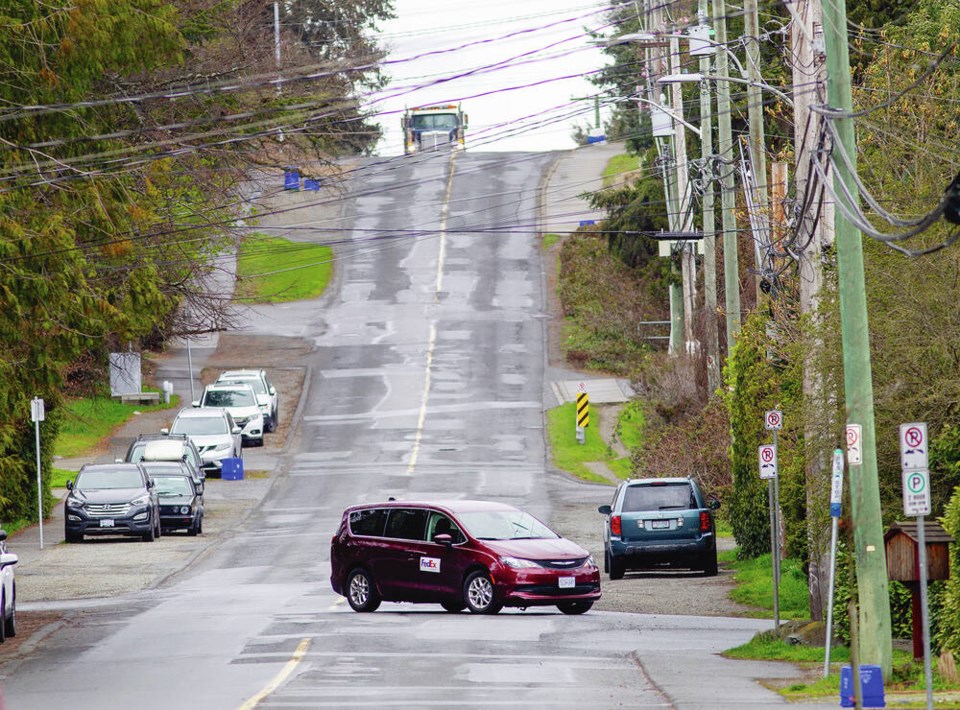Haven’t seen it in awhile but, last week I came across a two-footed driver. By that I mean a person who uses the right foot to step on the gas pedal and uses the left foot to step on the brake. This practice, and some other bad habits we see out there every day, make the road way less safe for everyone. So perhaps it’s time to pay some more attention to our driving “habits.”
Surprisingly, the jury is out as to whether left-foot braking is a safe practice or not. Many drivers feel a better sense of control when braking with the left foot. That may be so, but it is still not recommended for some very good reasons.
For new drivers, it’s a fail on your road test if you use the method. I suppose government policy still wants drivers to keep that left foot free to use on the clutch pedal, whatever a clutch is. Anyone remember those?
But there are some other important reasons to keep that left foot at bay. How did I know the person in front was a “two-footer”? Their brake lights were on full time. We can debate whether the left foot brake method is good or bad but what’s not debatable to me is stepping on the gas and the brake the entire time you’re driving as was the case here.
The purpose of brake lights is to warn drivers behind that you’re slowing or stopping. Full-time brake lights turn that into a guessing game. Secondly, you’re probably cutting your brake life in half. If you can replace your own brakes, then you’re good. If you’re not a mechanic, then you’re stacking up needless repairs and reducing brake effectiveness for times when you might really need them. To prove my point, the car I’m talking about had a burnt out right brake light — no doubt from overuse.
Riding the brakes continuously, with whatever foot you’re using, is just as bad. This is usually the sign of unconfident drivers — drivers who have lost faith in their own reaction times and overcompensate via the brake pedal.
I was a passenger in a vehicle once where the driver held the brakes on the entire length of descent on a steep hill. Nearing the bottom of the hill cars had slowed for an oncoming curve. My driver had to swerve into the shoulder to avoid a rear end collision - the brakes having overheated to the point of being ineffective.
On steep hills the best procedure is to reduce speed before descent then pump the brakes intermittently. This reduces brake friction, by allowing short periods for them to cool down, and keeps maximum braking power available for when you need it.
The fast starter and stopper is another habit making us all a little less safe on the road. They’re the ones who blast off from every stopped position, regardless of traffic volume, then have to brake just as hard to go back to being stopped again. That’s a habit which is both hard on the mechanics of your vehicle and your gas budget.
Racing from that imaginary “start line” to the next light decreases your chances to react to another vehicle’s sudden lane change into your path — and by leaving braking to the last minute, as you zoom up behind the car stopped in front, gives you no room for error if the road is wet or oily and you suddenly go into a skid.
Also in the top section of bad habits are drivers who play “vehicle versus the speed bump.” I suppose you win at this game by seeing how high you can make that ladder or wheelbarrow fly off the bed of your pickup as you cruise over a bump 10 or 15 k’s faster than you should.
Speed bumps are telling you there has been a problem with speeding in certain areas. It’s about being respectful on one level. On another level it’s about not tearing the bottom end of the vehicle for nothing. Fixing steering control assemblies and wheel alignments can be expensive propositions. Even more expensive is fixing broken leaf springs or cracked undercarriage frames.
Speeding, running red and yellow lights and following too closely probably top the list of bad habits but it’s also the little things we don’t often think about, like brake riding are also habits which you should try and train yourself to avoid — not just for safety’s sake but for the pocketbook as well.



